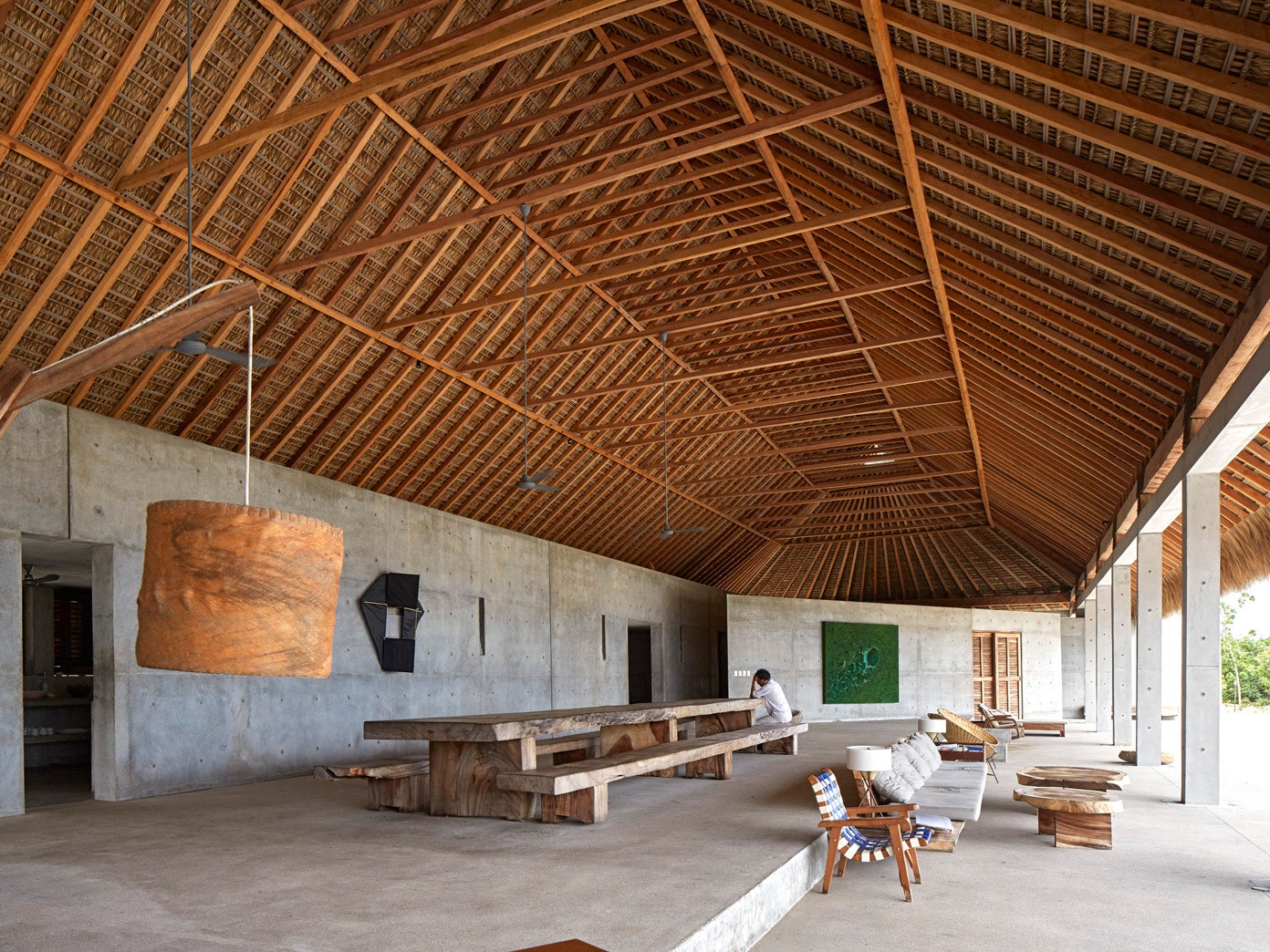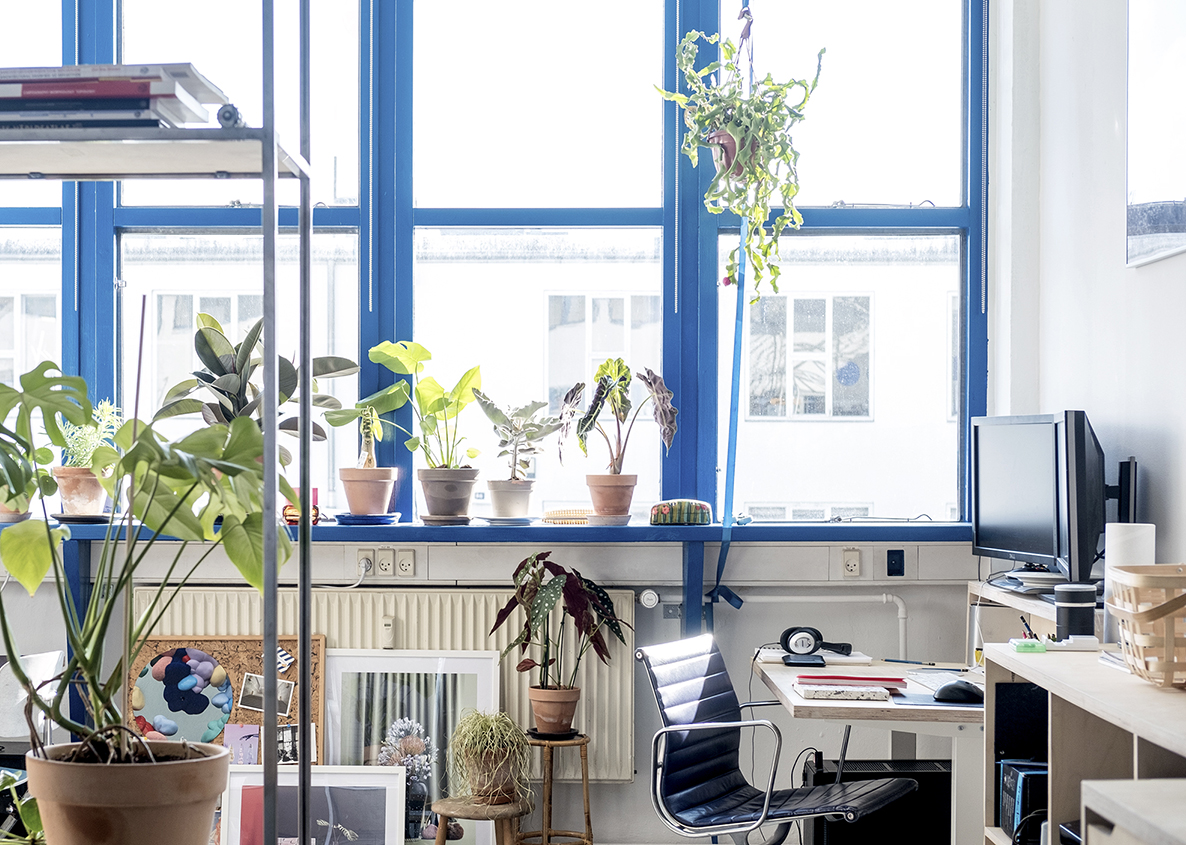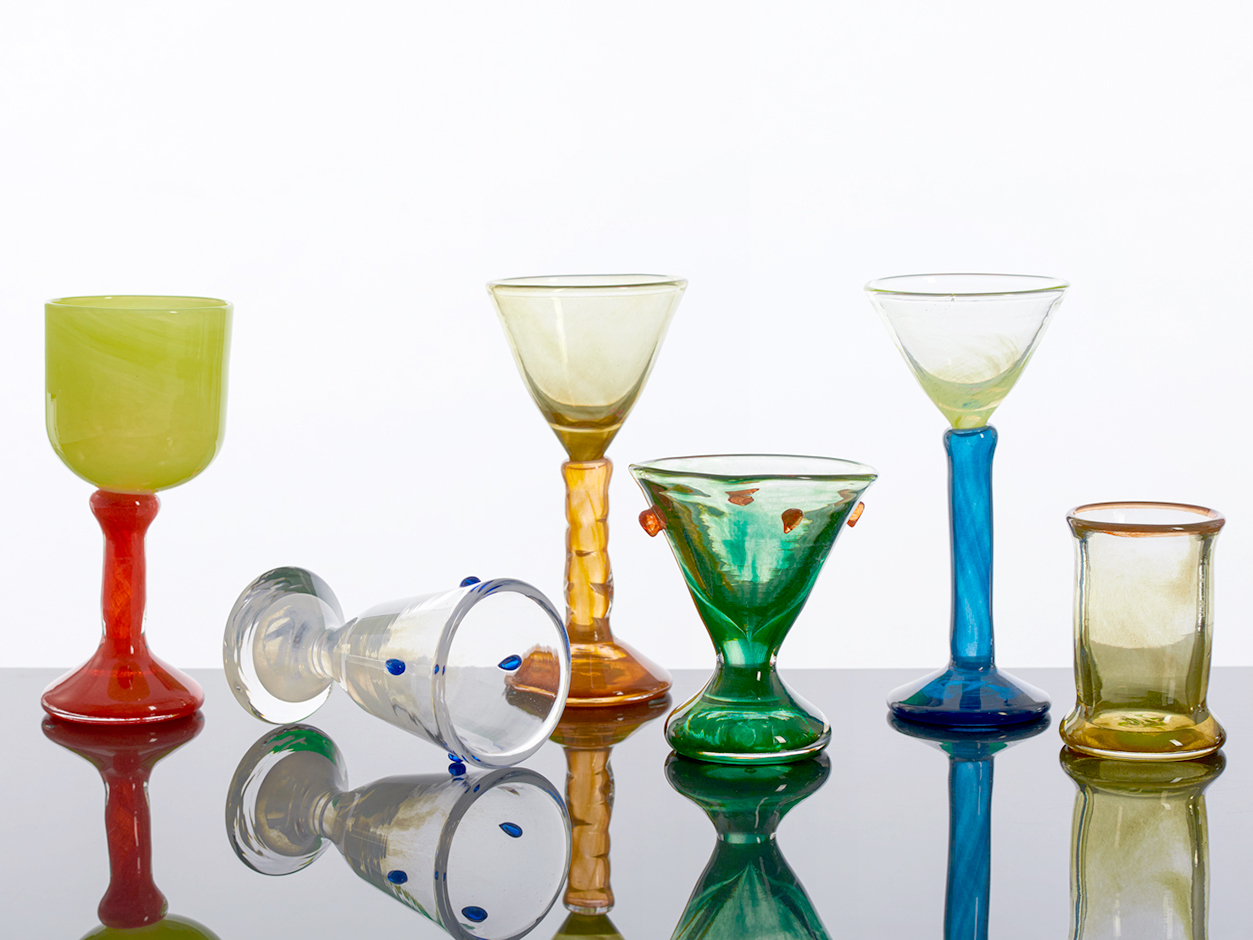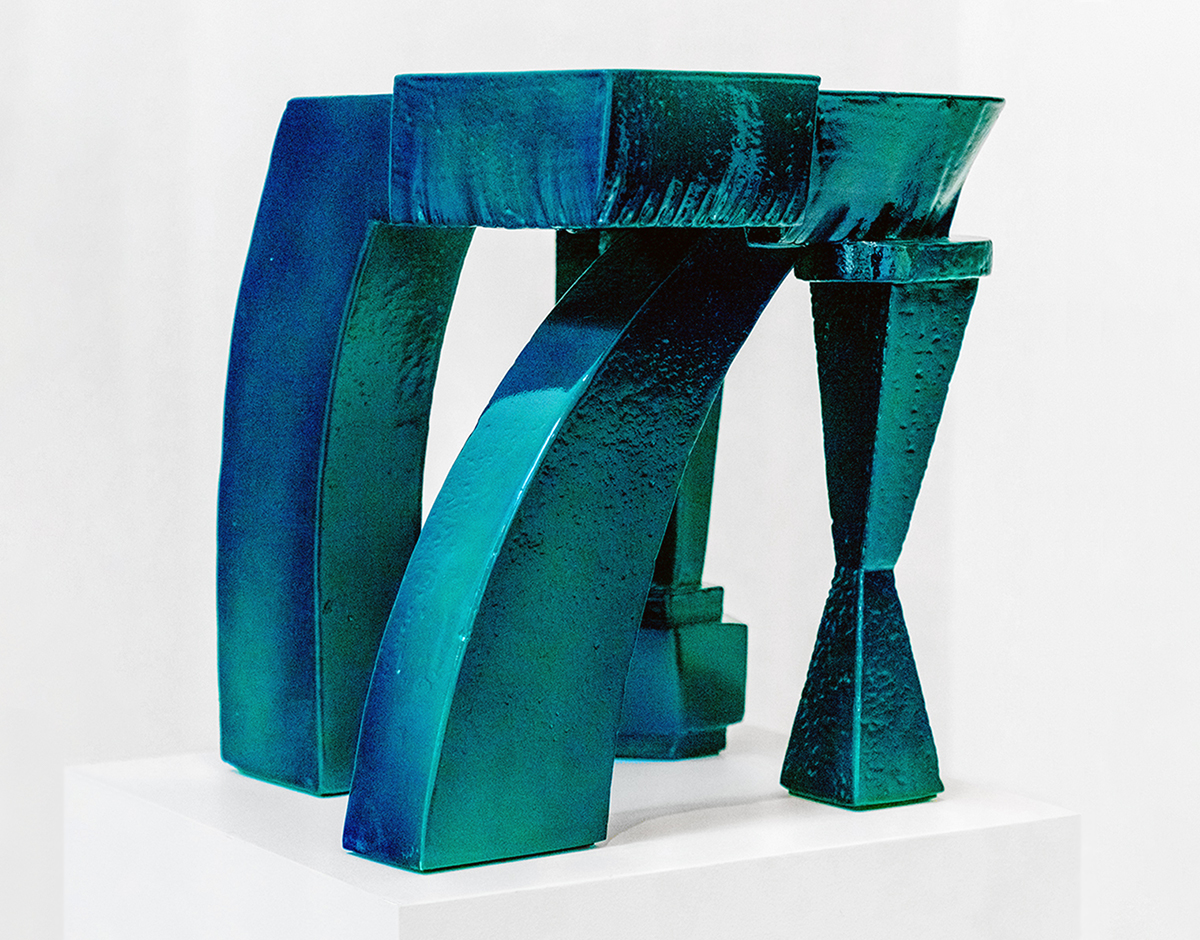
09.09.22
Up and Coming
“Am I Just Making the Trash of the Future?” And Other Philosophical Questions With Designer Drew Abrahamson
“I always want my work to be fun, not taken too seriously, a point of conversation,” says Australian artist and designer Drew Abrahamson. And while it definitely is, it’s thoughtful, too, and even veers, in a light-hearted way, toward the kinds of philosophical questions anyone who puts anything out into the world ought to probably ask themselves: “Am I just making the trash of the future?” Abrahamson’s answer, in his recent series “We Are All Garbage,” is pretty much yes, but concedes that there’s freedom and liberation in the act of creation, especially when it isn’t so tightly tied to the constraints of marketability.
His latest pieces of furniture include ceramic lamps that look like friendly, two-headed, three-footed creatures you’d like to have casting a warm glow over your space; shelves that could’ve arrived here via an interplanetary exchange; and side tables made of recycled polystyrene in bright orange, red, or deep green, that have a machine-like lacquer but also maintain that animate, amiable quality (with names to match, like Hot Cheeto Pony or Pretend Rich). “Although they can appear somewhat sculptural, I want them to be touched, thrashed, and interacted with in an everyday setting. Not displayed exclusively in a gallery space or home, I can’t bear this idea of having things in your house with no use or appreciation.”
Placing value on functionality, usability, and tactility might have something to do with the fact that Abrahamson’s training came from in-the-field experience rather than academic instruction. It’s led him to be resourceful and inventive in his process and his approach to materials — like repurposing foam leftovers from his job at a prop and set building company. “It’s been a great way to explore and establish my own style all without the burden of cost and unintended errors.” Before moving to Melbourne at 22, Abrahamson grew up in Adelaide on the Limestone Coast. “I went to school by the beach — a classic Aussie upbringing — nature, landscaping, and hard work have always followed me.” Which is what’s so winning about Abrahamson’s output: it’s hard, dedicated work that can still laugh at itself.
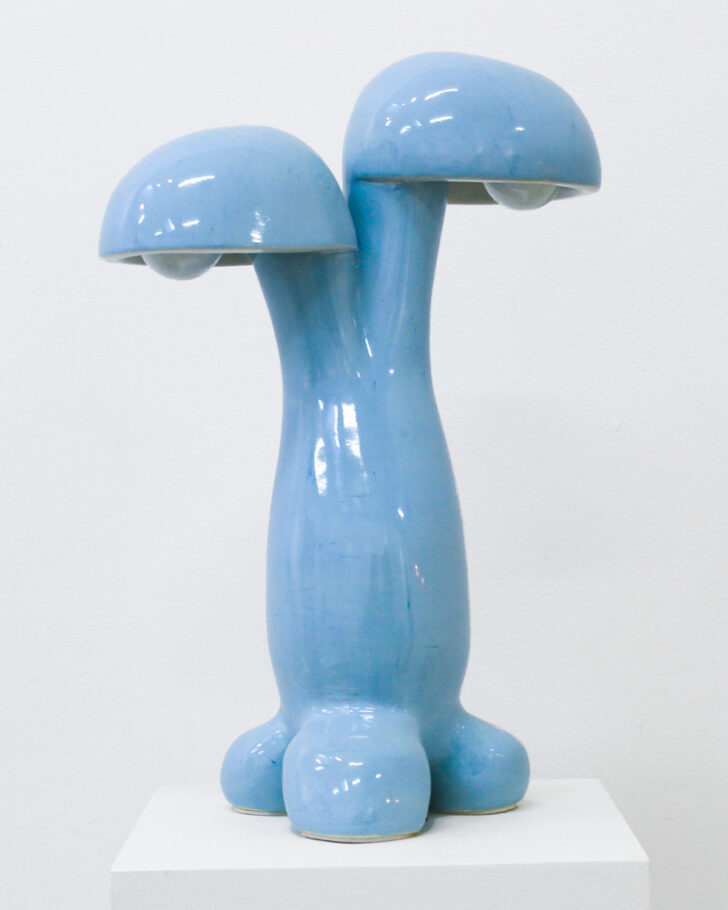

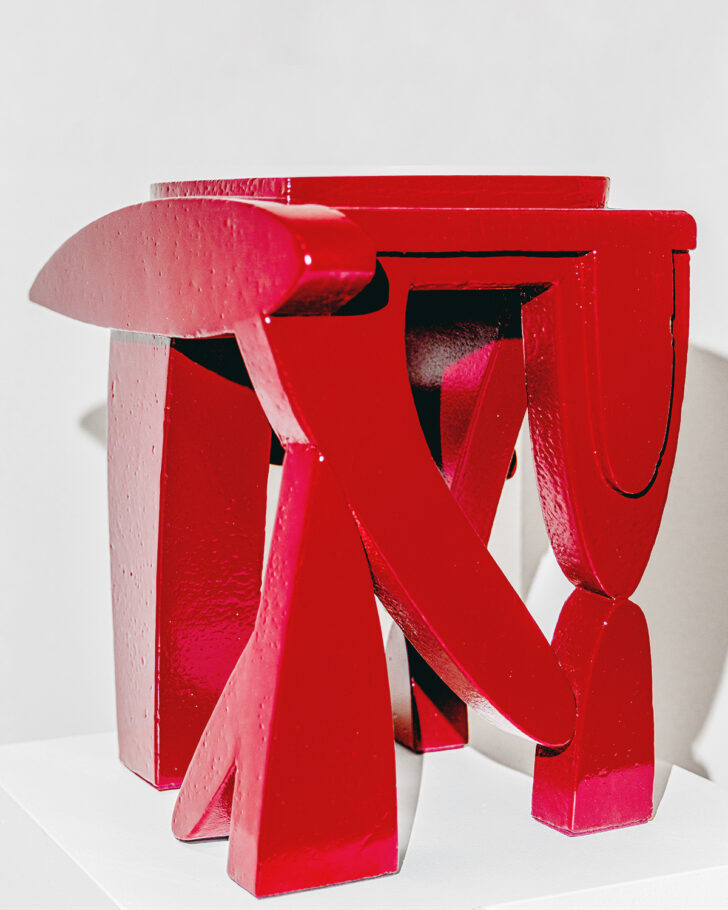
Can you walk me through your creative path and how you got to where you are now?
There has been a long continuous thread that runs through my many endeavors in life and it is that of the tangible. I am a touch-more, talk-less kind of person. I find physically making things walks me closer to a more concentrated sense of myself.
I have always loved to draw, so this is where my creative practice began. In my younger life I considered myself an illustrator. I then uncovered a love for printmaking. I have always been drawn to mediums that are process heavy, ones requiring a lot of finessing. The next iteration being working more in physical construction and learning how to build. Then here and there, I started taking on small furniture commissions initially just for the love of it.
Do you have formal training in the disciplines/mediums you work in?
My training has been very closely tied to my work. My father was a panel beater (that’s autobody repair for Americans), so growing up the spray painting and metal work was something I pocketed for later use. The closest formal training I had was a landscaping apprenticeship: welding, bricklaying, concreting, planting, you get the gist. I worked with denHolm/Steven John Clark, assisting him in his studio, and my current work building props keeps me attuned to different processes and how I can manipulate and integrate these into my own work.
What’s your studio like?
The studio has been a process in itself, in getting it right. I’m quite a nester, and though I wish I could be more of the person who can work anywhere, anytime, I have to be settled in an environment before I can begin working in it. If not, I only see all the improvements I need to make, and it bugs me too hard, a bit of a perfectionist like that… Everything is as modular as possible, on casters as my spatial needs change a lot. At times, I am needing floor space, while other times I need bench space. I try to keep it simple. It must be clear and clean so I can think purely about my work.
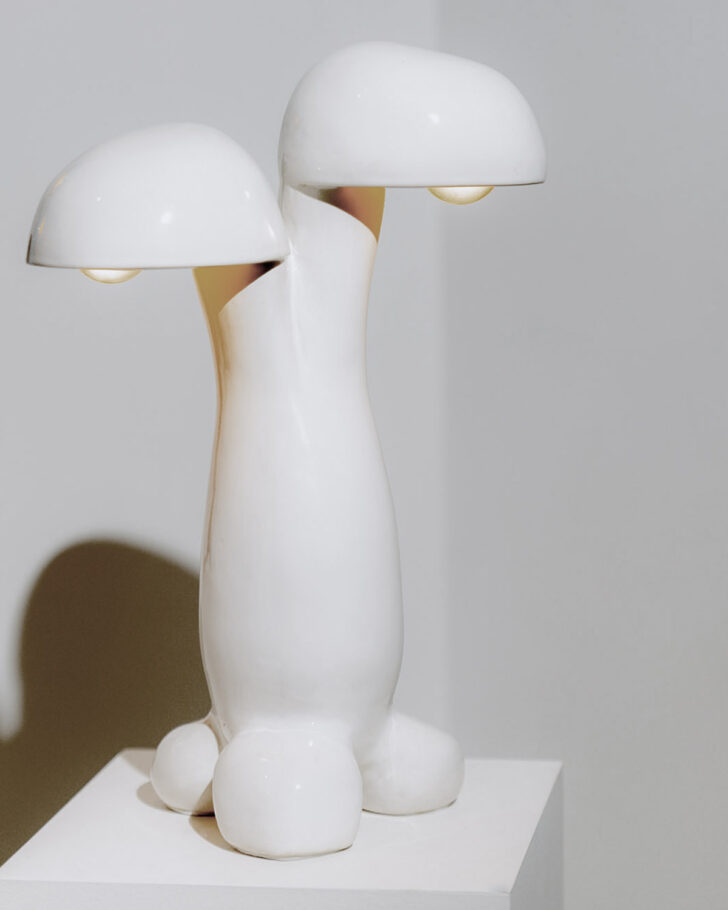
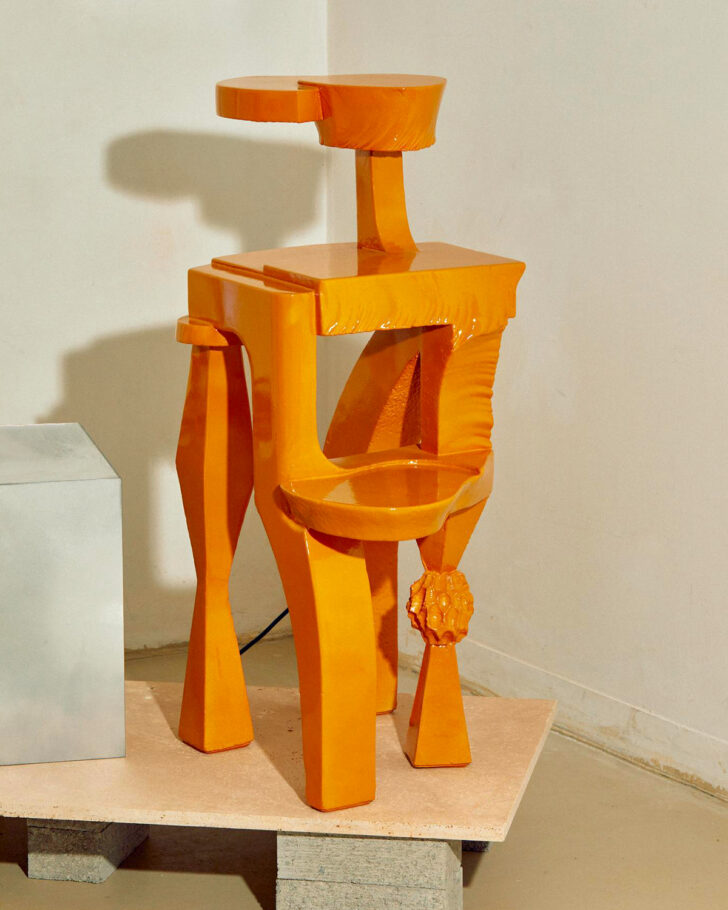
How do you typically work? What’s your process?
I tend to start with a sketch, nodding to my first love. I am usually juggling shapes, textures until I find a balance, something pleasing to the eye and from this I begin ideating what it could be made into. I guess the form comes before the function. Lately I have been surprised at how directly the sketch translates to the final piece.
Which materials appeal to you and why? I know you’ve worked with limestone and ceramics as well as recycled polystyrene.
Every material pushes me to enter another world. I have always loved working with timber however it is expensive and harder to experiment with. My use of polystyrene as a material sort of fell into my lap — or fell into my car boot, I could say. I work for a set/prop building company and the amount of waste in foam offcuts is shocking. It’s been a great way to explore and establish my own style all without the burden of cost and unintended errors. I’ve also been dipping my feet into slip casting recently and really love the feel and variety of finishes one can achieve with porcelain, excited to explore this medium further.
Are the polystyrene pieces functional, in the sense that they can bear weight?
In some cases, believe it or not, they are actually more sturdy! Some are weighted, and all are built to a steel frame. I have always been conscious about the function of the work, although they can appear somewhat sculptural, I want them to be touched, thrashed, and interacted with in an everyday setting. Not displayed exclusively in a gallery space or home, I can’t bear this idea of having things in your house with no use or appreciation.
Your use of color is so vibrant. Do you approach it intuitively or do you do much research around it?
Mostly it’s intuitive. The decision around colors can be quite a push and pull; however, I always know when it’s right or when it’s wrong. I always want my work to be fun, not taken too seriously, a point of conversation. I know it won’t be for everyone but for people who do like it — I want to them to adore it as if it were their first born. I’ve always enjoyed vibrant spaces, never been that much of a monochrome type of guy, and don’t fear color for any potential clashing hazards, rather see the beauty in the madness. Recently I’ve felt that my work may seem different, a bit few and far in between, but in my mind they are all from the same planet. Some upper class members of society and others more working class, more experimental. I think color does a lot to communicate this.
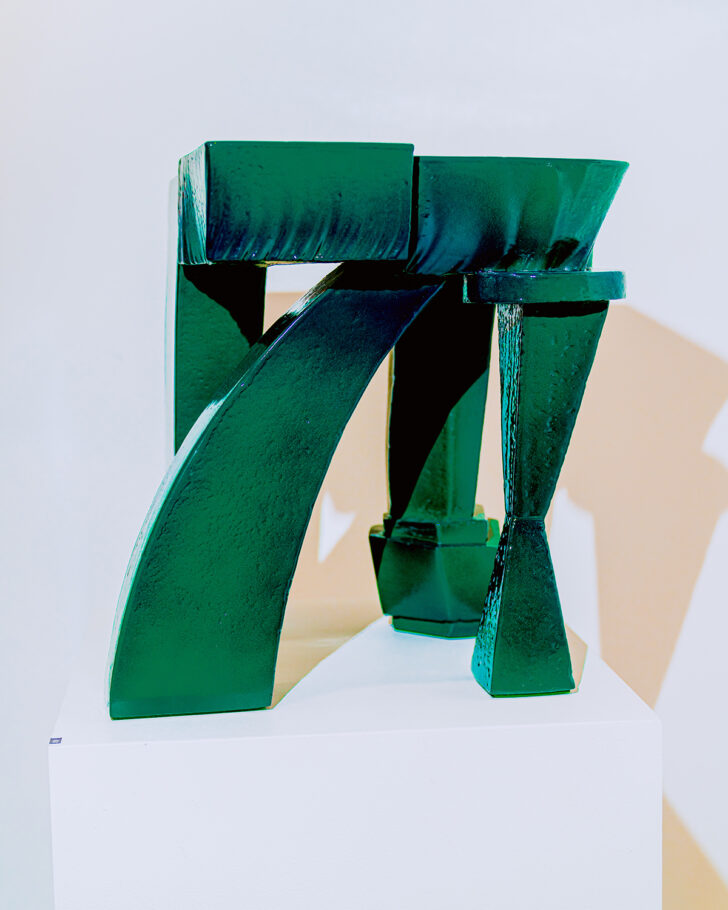
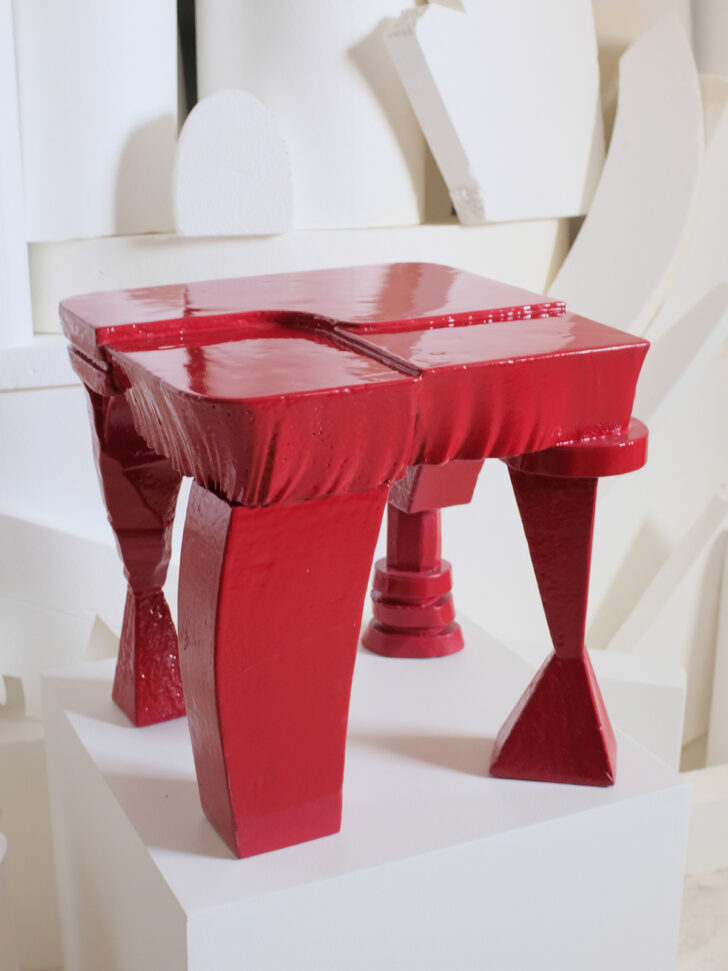
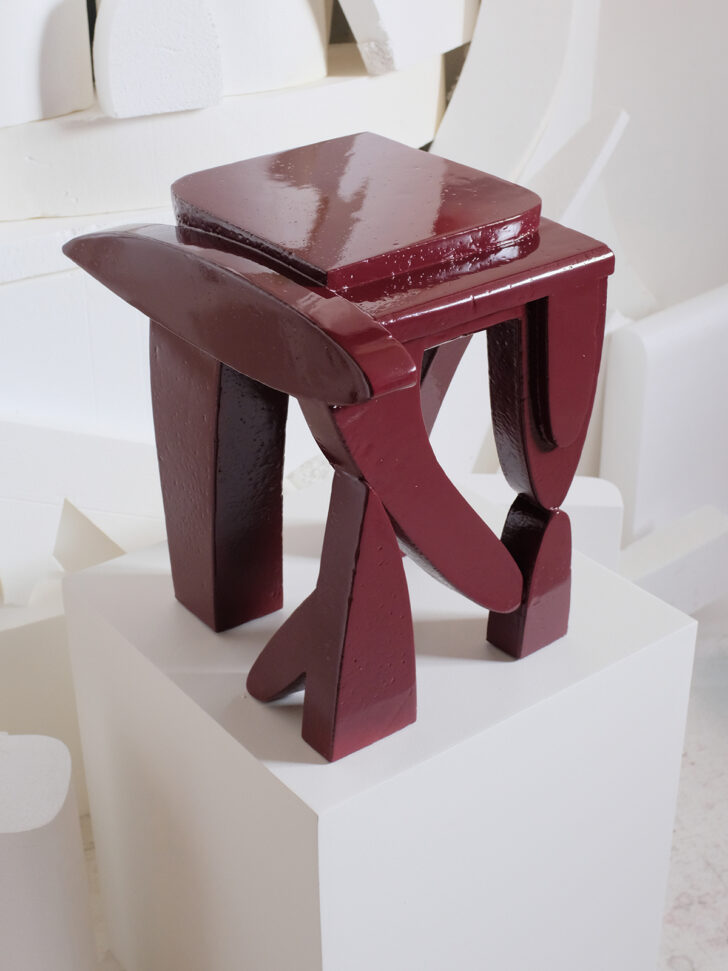
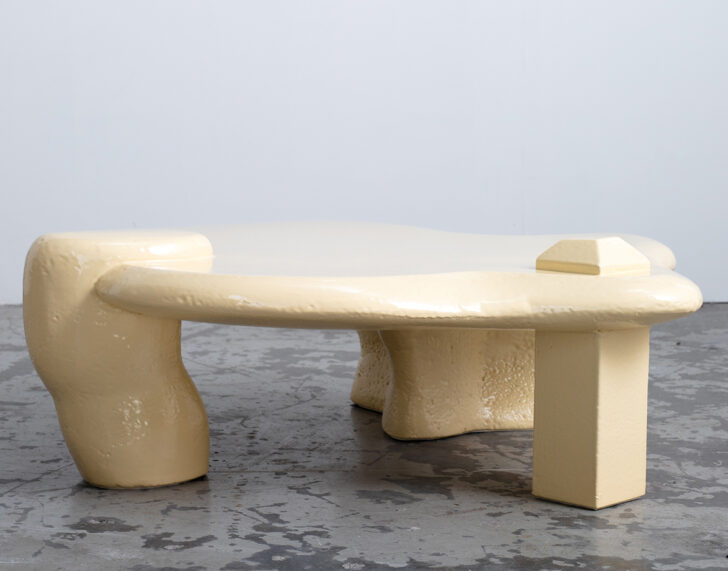
I love how you describe the “We Are All Garbage” pieces that were recently part of the Shapeshifter show at Melbourne’s Red Gallery: “Subjects ripe with contradictions… conflicted by excess, desire, to be adored, to be predestined waste. It’s okay to laugh at them, they are laughing too.” It sounds like… most of us. It also sounds like this work wrestles with notions of need and ambivalence (in creative work and in the act of production) and some very existential questions about what it all means. Are these concerns you intentionally set out to explore in these pieces? Or did they emerge as you were working?
The desire to be adored for your true form, your true thoughts – I suppose the work is a product of these internal conflicts and questions. I have always found liberation in my practice. Sure, it is self-indulgent. Is that necessarily a negative? Perhaps it would be easy to make work that appeals to a larger market, and consequently is more financially beneficial but I don’t think I would experience the same joy or liberation from making such works. After consistently being told to ‘pick something and stick with it’ I have been doing my own thing, different things, different materials, and as a result I have found a lot of drive in it.
The ‘We Are All Garbage’ thinking stemmed from my work at the prop building studio, building works from foam that sometimes will only appear for a total of 20 minutes. As I began to repurpose the foam, and make the series, I was reckoning with thoughts of “Am I just making the trash of the future?” Everything is garbage, we are all garbage, and no work can last forever — is there any real difference between 20 minutes and 20 years in the journey to the tip?
You have such great names/titles for your pieces. We Are All Garbage, Unfinished Novel, Stumpy French Vanilla, Hot Cheeto Pony, Pretend Rich… How do you come up with them? Are you interested in language, as a visual artist?
I would be remiss if I did not identify my friend and writer Morgan Meier, she is inside my head enough to walk around, we discuss, and she translates these into the words and story I could not. I do appreciate language, however it is not my vocation. This acknowledgment will please her very much.
What’s been influencing or inspiring you lately?
In my illustrating days, it was a lot of the human form. I appreciate the female body particularly with all its curves — it’s not for me personally, but I do enjoy its sense of fluidity and movement. I do find I draw a lot of inspiration from the natural world, seems cliché but after I have been outside amongst the chaos of nature, I feel my ideas are wilder. You can’t beat nature, world’s greatest designer.
What’s next for you? What are you working on?
More lamps! I plan on making a larger number as a series to show together. I am prototyping some curved works with plywood so will be diving deeper into that in the coming months. I would love to work on a collaborative project of some kind as well. The lines are open, people.
